Context:
| Probable Question:
Q. Discuss the various challenges faced towards climate financing. Suggest the way forward to achieve atma nirbharta/ self reliance in climate finance. |
What is Climate Financing?
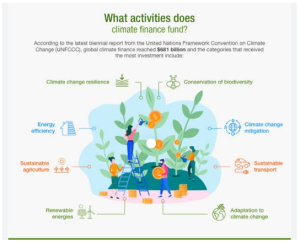
Climate Financing Mechanism:
Common but Differentiated Responsibilities and Respective Capabilities (CBDR–RC):
|
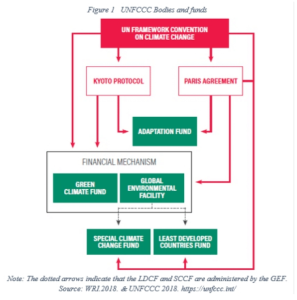
Climate financing mechanisms of India:
Concerns/ Challenges associated with Climate Financing:
Way Forward:
| Additional Information:
Status of Climate Financing:
Recent commitments:
Indian efforts towards Climate financing:
|
News Source: Indian Express
Context:
Recently, the Global Assessment Report on Disaster Risk Reduction (GAR) was released by the UN Office for Disaster Risk Reduction (UNDRR).
| Probable Question:
Q. Discuss the main findings and recommendations of the Global Assessment Report on Disaster Risk Reduction (GAR) was released by the UN Office for Disaster Risk Reduction (UNDRR) report. |
About Disaster Risk Reduction (DRR)
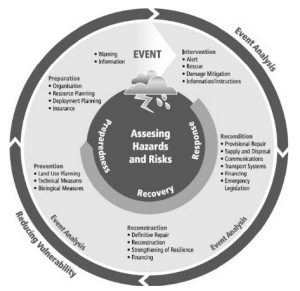
Highlight of Report
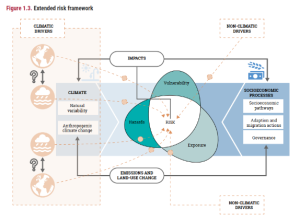 Example: the economic and social costs of the pandemic in 2020, measured in lifeyears lost, far outweighed the average annual costs of other disasters, and the summed cost of all epidemics from 2000 to 2019.
Example: the economic and social costs of the pandemic in 2020, measured in lifeyears lost, far outweighed the average annual costs of other disasters, and the summed cost of all epidemics from 2000 to 2019.Recommendation from the Report:
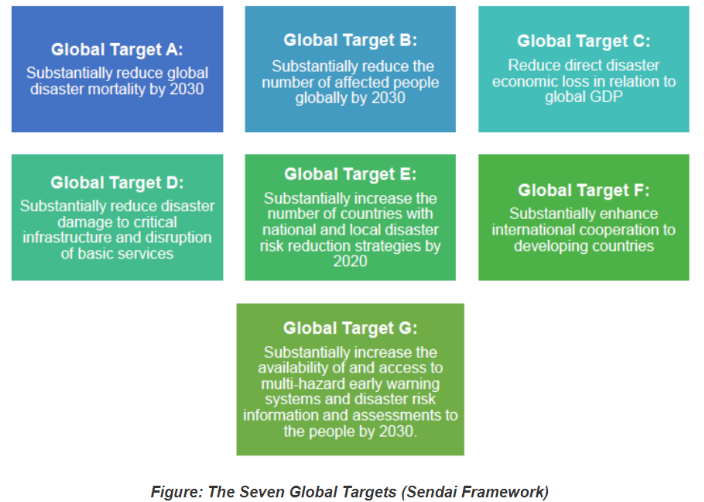
Conclusion:
About UN Global Assessment Report on Disaster Risk Reduction (GAR):
About UNDRR
Sendai Framework on Disaster Risk Reduction 2015–2030
Sustainable Development Goals (SDGs)
Paris Agreement
India’s Effort: National Platform for Disaster Risk Reduction (NPDRR), 2013
Coalition for Disaster Resilient Infrastructure (CDRI)
|
News Source: Report
Context:
The Indian Computer Emergency Response Team (CERT-In) has issued a warning about a new internet ransomware virus called ‘Akira,’.
About Akira:
About Ransomware:
CERT-In
|
News Source: The Hindu
Context: Recently, the primary patent of Janssen Pharmaceuticals, over bedaquiline expired.
About Bedaquiline:
Drug-Resistant TB:
Burden of Drug-resistant TB:
What happens when a Patent over a Medicine Expires ?
Generic Versions of Medicine:
|
News Source: The Hindu
Context:
Recently, Hundreds of Zero FIRs registered in Manipur, leading to stalled investigations.
About Zero FIR:
News Source: The Indian Express
Context:
India’s Prime Minister, addressed the G20 Energy Ministers Meet in Goa.
Key Outcomes of the Summit:
| Zero and Low-Carbon Hydrogen
Different types of hydrogen production techniques that aim to reduce or eliminate carbon dioxide (CO2) emissions are referred to as zero and low-carbon hydrogen, respectively. |
India’s Achievements in Energy Initiatives:
| Additional Information:
Global Biofuels Alliance (GBA):
|
News Source: PIB
Context:
Gujarat’s Department of Science and Technology (DST) signed a MoU with OneWeb India Communications Pvt Ltd to establish India’s first ‘satellite network portal site’ in Mehsana, Gujarat.
About OneWeb:
Satellite Network Portal Site:
News Source: The Indian Express
Context:
The Delhi High Court ruled that the Patents Act, will take precedence over the Competition Act concerning the exercise of rights by a patent holder.
About the Case:
| What are antitrust laws?
Antitrust laws are rules that promote competition by restricting a firm’s ability to dominate the market. This frequently entails dismantling monopolistic firms as well as making sure mergers and acquisitions don’t excessively concentrate market power. |
Verdict:
About Patents Act:
| Additional Information:
About Competition Commission of India (CCI):
The Competition Act, 2002:
|
News Source: The Livemint
| Lokmanya Tilak |
|
| Chandra Shekhar Azad |
|
News Source: Hindustan Times
SC Verdict on Newsclick Shows Adherence to Due Pro...
Stay Invested: On Chabahar and India-Iran Relation...
Credit Rating Agencies, Impact on India’s De...
Catapulting Indian Biopharma Industry
Globalisation Under Threat, US Import Tariffs Have...
Global Report on Hypertension, Global Insights and...
<div class="new-fform">
</div>
